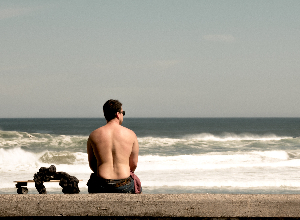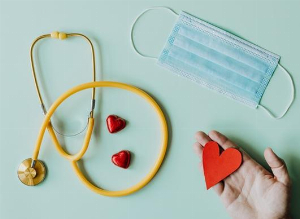Osler-Weber-Rendu Disease: “The bleeding can be hard to live with, but I stay positive no matter what!”
Published 14 Nov 2019 • By Louise Bollecker
Pierre, 52, is a an administrative agent in a penitentiary, married and the father of 3 children. Diagnosed with Osler-Weber-Rendu disease, he agreed to talk to us about his symptoms, the treatment he receives and his patient care journey.

Can you explain a little about what Osler-Weber-Rendu disease (aka “hereditary haemorrhagic telangiectasia” or “HHT”) is?
My blood vessel endings are swollen and slightly weakened causing frequent nose bleeds to the point of leaving me in a state of chronic anaemia with a haemoglobin level of between 09 and 10 grams per litre of blood, while the normal level for an adult man is around 13 to 17 grams per litre.
Sometimes the haemorrhaging is so bad that my haemoglobin levels fall below 6 grams per litre and I have to go get a blood transfusion.
Other parts of the body can sometimes be affected as well (lungs, brain, intestines, etc.).
What were the first symptoms of the disease and when did they appear?
Red spots on my face and hands (angioma), caused by the ends of blood veins that fill up with blood and expand. The first nose bleeds. The angioma showed up when I was around 16 and for the past 2 years, severe bleeding (I had to get transfusions to restore my haemoglobin levels).
How long did it take for you to get diagnosed? What tests did you undergo?
I didn’t take any tests before getting diagnosed. Usually, you would need to go see a geneticist, but two of my brothers had developed the disease before me, so I knew right away what it was. When my doctor broke the news to me, I was resigned to it. It’s a hereditary and very rare disease.
How are you now? Is this a curable disease?
For the moment, there’s no cure and the list of medications is long: Tranexamic acid 3gr/day to thicken the blood, a pomade containing vitamin E called Rhinovita that I apply every night to the inside of my nose, and Ferinject (ferric carboxymaltose) taken intravenously once a month. If we’re lucky that will put a stop to the haemorrhaging, but there’s no guarantee of that. My way of life hasn’t really changed.
Do you go to a reference centre to get treatment or to a physician?
I go to a day centre for my blood transfusions and Ferinject treatments. Once a year I also get an endoscopy/colonoscopy and an MRI scan of my lungs and brain.
What’s that hardest part of having this disease?
It’s a difficult disease, particularly with the nose bleeds which can start at work, at a restaurant, the pool, on the train, on the street…I stay positive in spite of it all, but I’m an optimist by nature. I always tell myself that other diseases like cancers or paralysis are much harder to deal with.
Do you have any advice for people newly diagnosed with this condition?
It’s a hard illness to deal with, but never forget that life is still beautiful!
Thank you Pierre, for sharing your story on your experiences with Osler-Weber-Rendu Disease. And what about you? Do you have or are you caring for someone living with Osler-Weber-Rendu disease? How were you diagnosed? And how do you deal with symptoms? Leave your answer in the comment section below.
1 comment
You will also like

After a heart attack, it is necessary to resume doing sport or to start doing it
15 May 2018 • 4 comments

PCSK9-inhibitor drugs: A game-changer for individuals with extremely high cholesterol levels
1 Mar 2016

 Facebook
Facebook Twitter
Twitter

